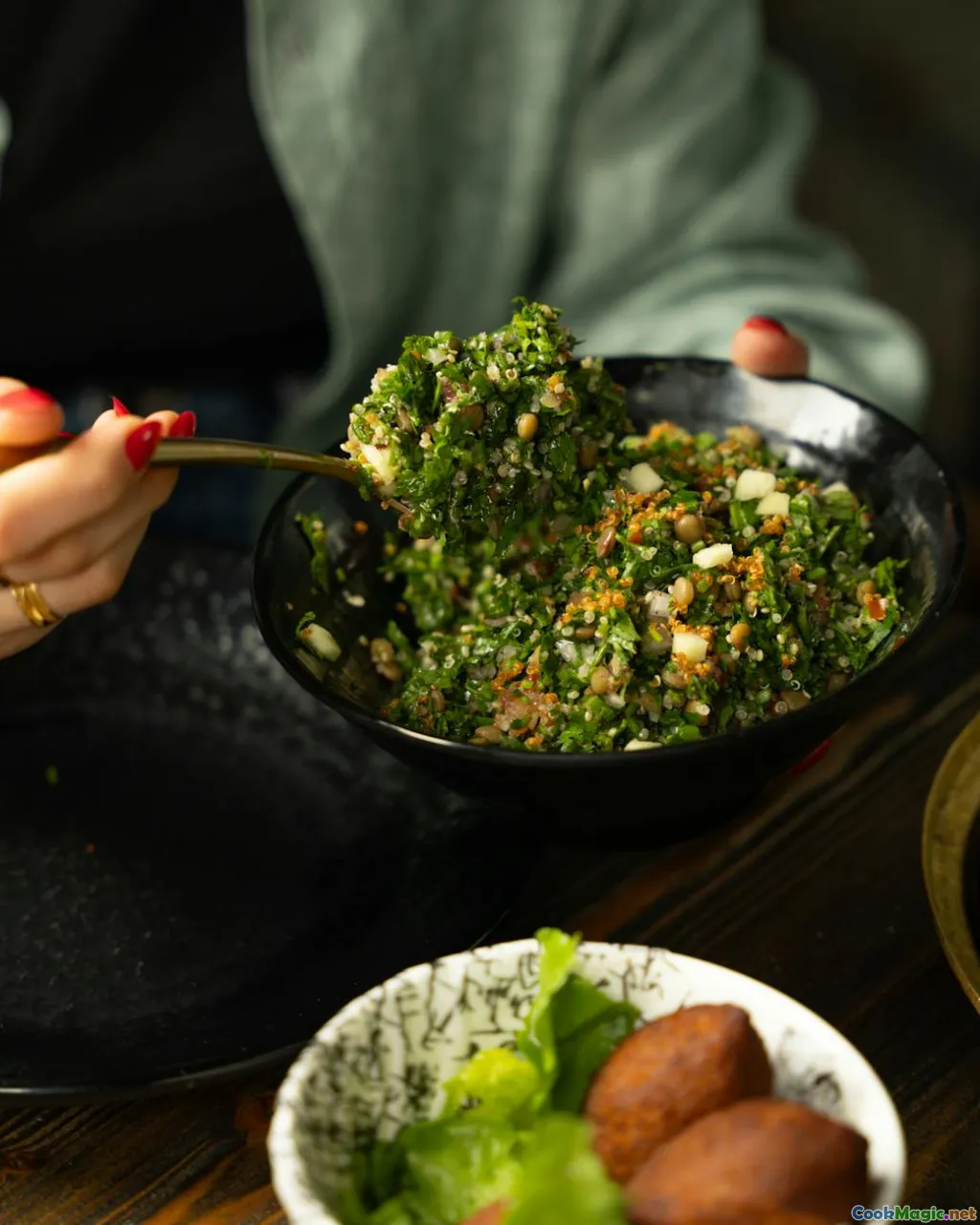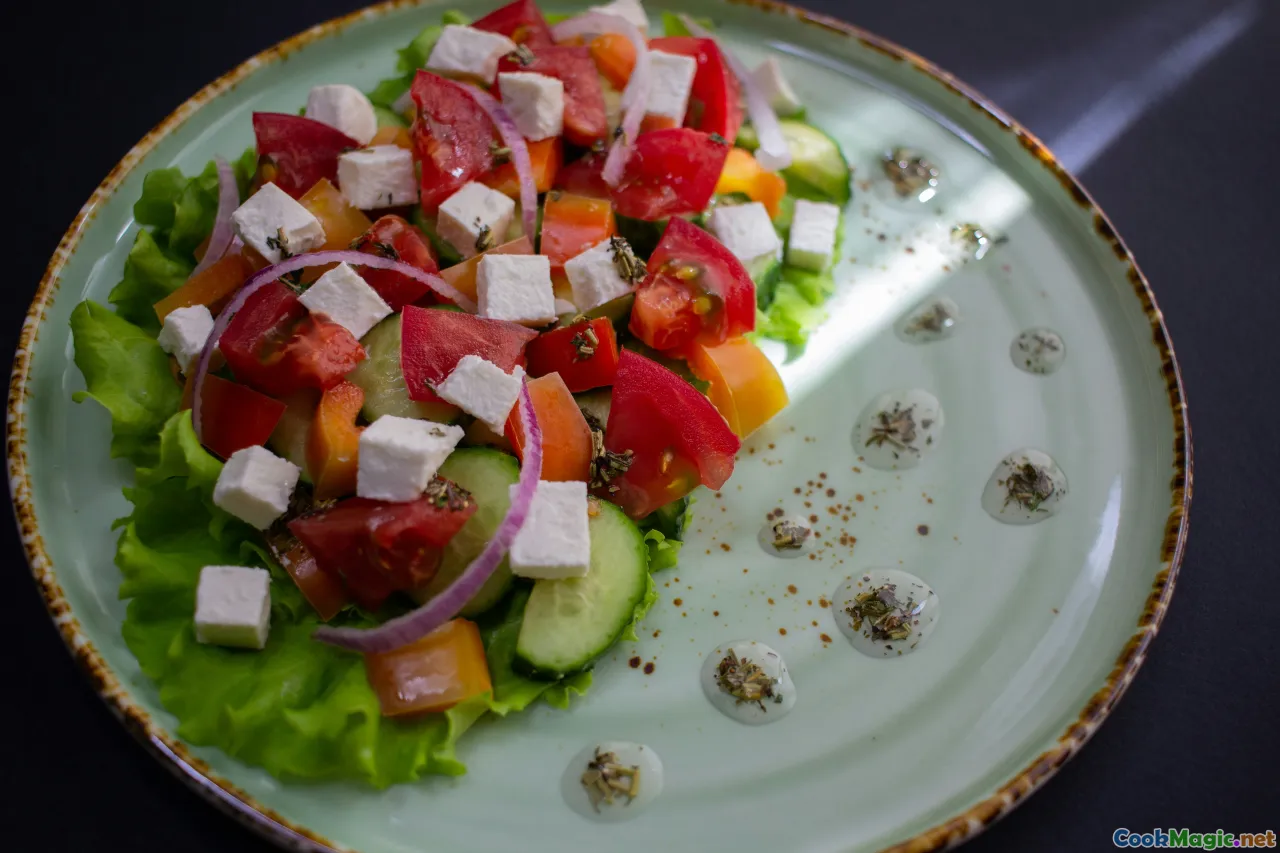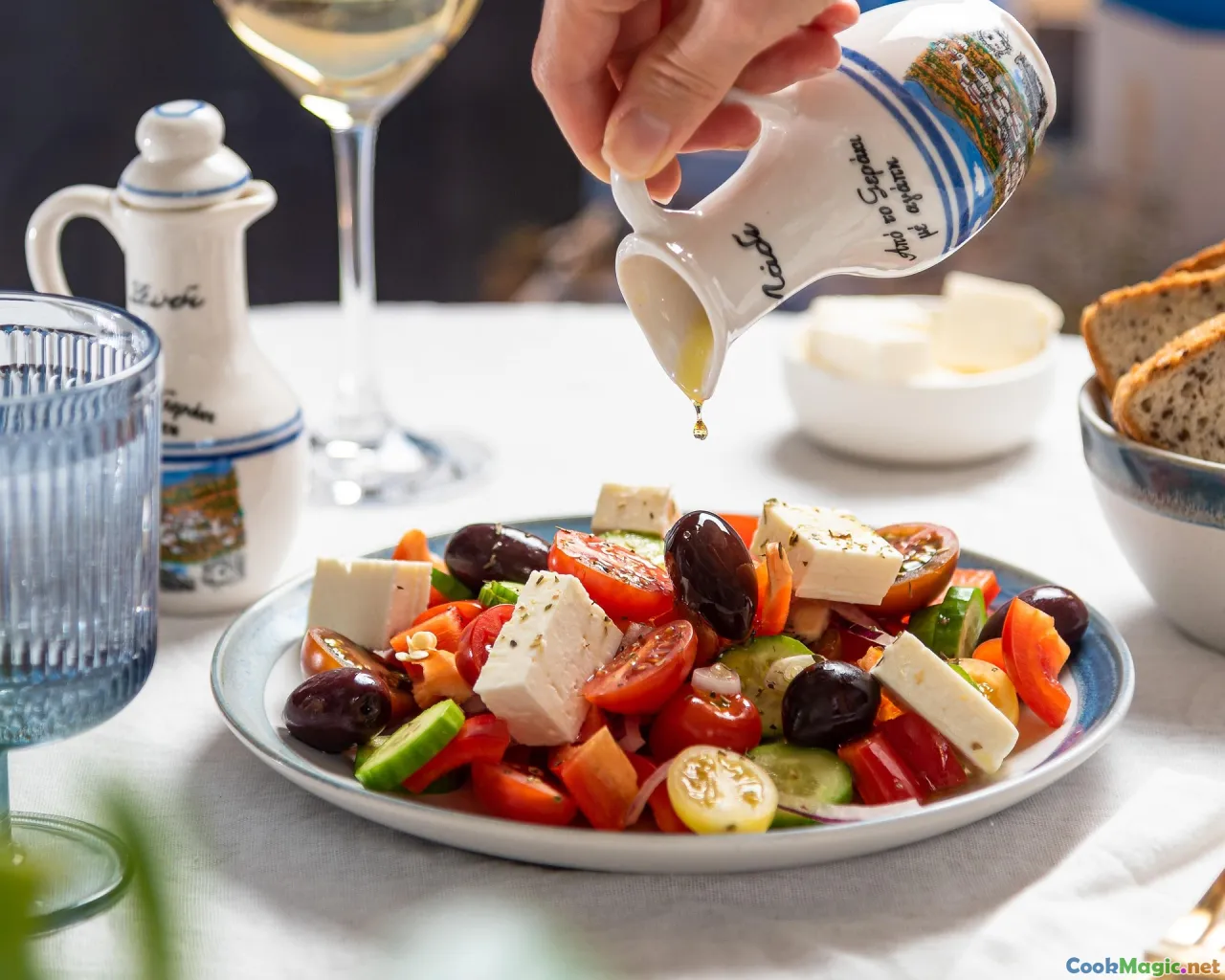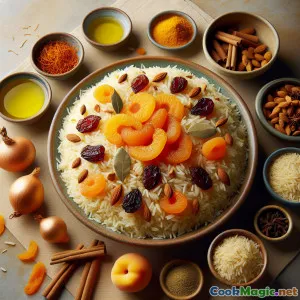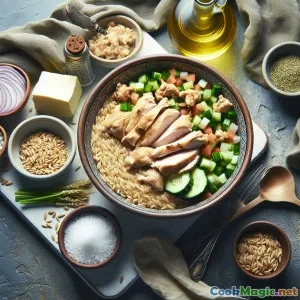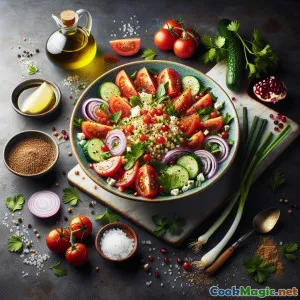
春季新鲜叙利亚碱面和番茄沙拉
(Fresh Syrian Bulgur & Tomato Salad for Spring)
(0 评论)食材
-
150 grams 细粒碎麦
(Use fine or medium grind for quickest prep)
-
3 medium 成熟的番茄
(Plum or heirloom for best flavor)
-
1 medium 黄瓜
(Armenian or English cucumber preferred)
-
0.5 medium 红洋葱
(Soaked in water to reduce sharpness)
-
1 cup 新鲜欧芹
(Leaves chopped, packed)
-
0.5 cup 新鲜薄荷
(Chopped; essential for freshness)
-
3 tablespoons 特级初榨橄榄油
(High quality oil preferred)
-
2 tablespoons 柠檬汁
(新鲜压榨)
-
2 teaspoons 石榴糖浆
(Adds tangy sweetness)
-
1 teaspoon 磨碎的孜然
(Aromatic flavor punch)
-
1 teaspoon 盐
(按个人口味)
-
0.5 teaspoon 黑胡椒
(新鲜磨碎)
-
2 whole 葱
(切碎,作为装饰)
-
50 grams 碎费塔奶酪
(For serving, optional for vegans)
(Use fine or medium grind for quickest prep)
(Plum or heirloom for best flavor)
(Armenian or English cucumber preferred)
(Soaked in water to reduce sharpness)
(Leaves chopped, packed)
(Chopped; essential for freshness)
(High quality oil preferred)
(新鲜压榨)
(Adds tangy sweetness)
(Aromatic flavor punch)
(按个人口味)
(新鲜磨碎)
(切碎,作为装饰)
(For serving, optional for vegans)
营养
- 份量: 4
- 每份大小: 1 bowl (about 200g)
- Calories: 225 kcal
- Carbohydrates: 38 g
- Protein: 5 g
- Fat: 7 g
- Fiber: 7 g
- Sugar: 6 g
- Sodium: 400 mg
- Cholesterol: 5 mg
- Calcium: 110 mg
- Iron: 2 mg
制作步骤
-
1 - Soak the Bulgur:
Place bulgur in a large mixing bowl. Pour over 180ml of boiling water. Cover and let stand for 10 minutes until water is absorbed and grains are tender.
-
2 - Prepare Vegetables:
Dice tomatoes and cucumber. Finely chop the parsley, mint, soaked red onion, and scallions (if using).
-
3 - Make the Dressing:
Whisk together olive oil, lemon juice, pomegranate molasses (if using), cumin, salt, and black pepper to create a bright and tangy dressing.
-
4 - Combine Salad:
Fluff the soaked bulgur with a fork. Toss with vegetables and herbs. Pour in the dressing and mix until evenly combined.
-
5 - Garnish and Serve:
Let salad sit for at least 3 minutes to absorb flavors. Sprinkle with crumbled feta (if desired) just before serving.
Place bulgur in a large mixing bowl. Pour over 180ml of boiling water. Cover and let stand for 10 minutes until water is absorbed and grains are tender.
Dice tomatoes and cucumber. Finely chop the parsley, mint, soaked red onion, and scallions (if using).
Whisk together olive oil, lemon juice, pomegranate molasses (if using), cumin, salt, and black pepper to create a bright and tangy dressing.
Fluff the soaked bulgur with a fork. Toss with vegetables and herbs. Pour in the dressing and mix until evenly combined.
Let salad sit for at least 3 minutes to absorb flavors. Sprinkle with crumbled feta (if desired) just before serving.
关于 春季新鲜叙利亚碱面和番茄沙拉 :的更多信息
Syrian Bulgur & Tomato Spring Salad: Tradition Reimagined
Syrian Bulgur & Tomato Spring Salad is a perfect union of ancient culinary traditions and fresh, modern sensibility. This lively, wholesome salad draws yesteryear’s wisdom into the present moment, offering vibrant colors, radiant herbaceous fragrance, and a delightfully simple preparation. It's almost an edible postcard from a springtime Syrian lunch spread.
A Brief History & Cultural Context
Bulgur (cracked wheat) forms the backbone of Levantine cuisine and has played a staple role on Syrian dinner tables for centuries. Food historians estimate bulgur’s origins reach as far back as 4,000 years ago in the Fertile Crescent. It's very much a food of the land – whole grains partially cooked, sun-dried, and cracked – which require little more effort to prepare and are powerfully nutritious.
While tabbouleh often steals the international spotlight, Syria’s regional salads use bulgur as a central player more boldly, letting the grain puff up beneath loads of chopped vegetables, parsley, and bursting seasonal tomatoes. Throughout Syria, each household personalizes its bulgur salad, with variations in herb ratios, spice blends, and the inclusion of cucumbers, onions, and aromatic extras. The salad is refreshing but hearty, soothing in summer heat and awakening after the muted flavors of winter.
What Makes This Salad Unique?
What separates this salad from similar Levantine recipes is its open embrace of improvisation, while always revolving around fine, quick-soaking bulgur and juicy tomatoes. Instead of traditional tabbouleh's parsley bounty, here bulgur stands at the fore, balanced by myriad colors and fresh textures. The optional teaspoon of pomegranate molasses introduces tangy, almost floral depth—a nod to Aleppine culinary signatures. Cumin offers earthy resonance, olive oil its infamous luxuriant body, while parsley and mint evoke the awakening of spring.
The salad doesn’t aim for mere discipline, but celebration. You can eat it as a filling side dish, a satisfying lunch, or serve as part of a sharing mezze. Syrians may top it with cheese or even toasted nuts; pomegranate seeds are occasionally included as well, playing on the notes of pomegranate in the dressing.
Tips & Notes for Success
- Bulgur Type Matters: Use fine- or medium-grind bulgur for this salad, as it requires a quick boiling water soak—no stove necessary.
- Quality Produce: Peak-season tomatoes and crisp-from-the-market cucumbers lend refreshing bite and optimal flavor.
- Herb Substitutions: If you’re missing mint or want extra green, a little dill or fresh basil complements the salad marvelously.
- Texture Want: The recipe makes this salad vegan, but feel free to scatter crumbles of tangy feta as a finishing touch—which, while untraditional, pairs deliciously with the vegetabley brightness and soft wheat.
- Rest for Flavor: Allowing the salad to sit a few minutes before serving deepens the flavor linkage and lets the bulgur further absorb remaining juices.
Dietary and Nutritional Considerations
This is an extremely versatile salad—naturally vegan if you skip the cheese, nut-free, and lively with dietary fiber, vitamins, and minerals. Bulgur itself is a prime source of plant-based protein and complex carbohydrates, while tomatoes pour in antioxidants. The salad is also gentle on sodium, fat, and sugar (unless you opt to add feta and/or pomegranate molasses).
Personal Thoughts: Celebrating Syrian Spring
Having prepared bulgur salads across several Middle Eastern kitchens, this Syrian iteration stands witness to the triumphant resourcefulness of home-cooking. It is resilient and gently innovative. The salad, at its best, is greater than the sum of its parts—it represents Syrian hospitality: and this tradition of welcoming guests with generosity, laughter, and plenty of seasonal, nourishing foods.
The aroma uncaps emotional memories: picnics under soft sun surrounded by cleft stone and the peal of spring birds, a mesh of textures and hues that echo the diversity and richness of Syria’s natural and cultural landscapes. This humble bowl allows us to travel far and wide—from a kitchen counter all the way to Damascus—through bold, sunny flavors.
If you’re seeking a vibrant new salad to grace your next dinner or picnic, brimming with healthfulness and story, Syrian Bulgur & Tomato Spring Salad will not disappoint. Serve with warm pita if you wish, and let spring bloom on your table all year round.

